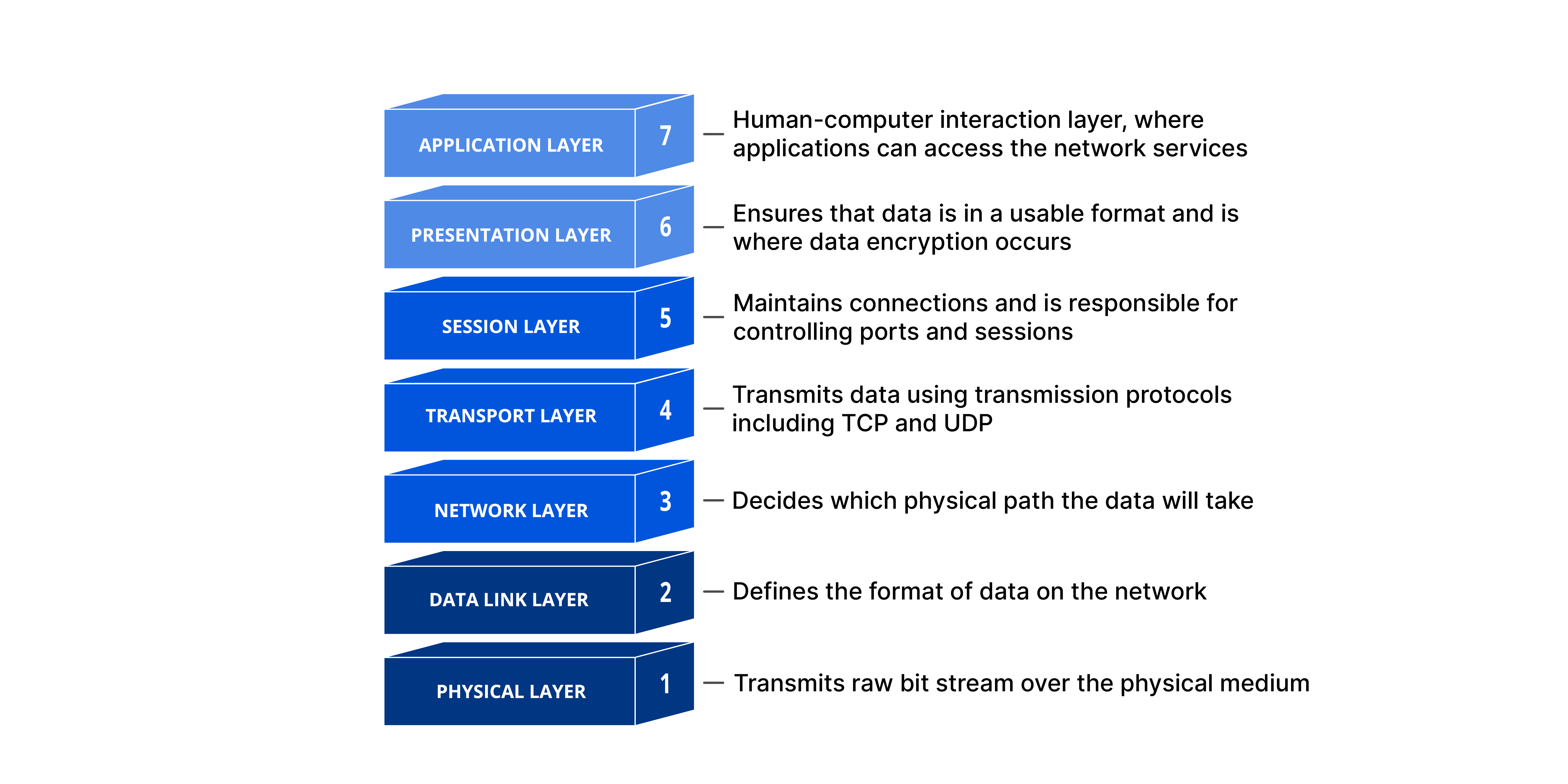
Functions of the Transport Layer in OSI/RM
Introduction
In the realm of networking, the OSI (Open Systems Interconnection) Reference Model serves as a fundamental framework for understanding the intricate workings of computer networks. One of its integral components is the Transport layer, which plays a pivotal role in ensuring seamless data communication between devices. In this article, we will delve into the various functions of the Transport layer within the OSI/RM and its significance in maintaining reliable and efficient network communication.
Understanding the OSI/RM
Before we dive into the functions of the Transport layer, let’s briefly recap the OSI/RM. The OSI/RM is a conceptual model comprising seven distinct layers, each responsible for specific networking tasks. These layers are designed to work harmoniously, facilitating data transmission from one point to another in a structured and organized manner.
Functions of the Transport Layer
- Segmentation and Reassembly: The primary function of the Transport layer is to divide the data received from the upper layers into smaller, manageable segments for efficient transmission. These segments are then transmitted over the network individually. At the receiving end, the Transport layer reassembles these segments into the original data, ensuring accurate delivery.
- End-to-End Communication: The Transport layer establishes end-to-end communication channels between applications running on different devices. It assigns unique port numbers to each application, allowing data to be directed to the correct application on the receiving end. This enables multiple applications to coexist on the same device without interference.
- Flow Control: To prevent overwhelming the receiving device with data, the Transport layer implements flow control mechanisms. These mechanisms regulate the flow of data between sender and receiver, ensuring that the receiver can handle the incoming data at a pace it can manage. This helps in preventing congestion and optimizing network performance.
- Error Detection and Correction: The Transport layer performs error detection and correction by attaching checksums to data segments. These checksums allow the receiving device to verify the integrity of the data. If errors are detected, the Transport layer can request the sender to retransmit the corrupted segments, ensuring the accurate delivery of data.
- Multiplexing and Demultiplexing: Multiplexing involves combining multiple data streams into a single stream for transmission, while demultiplexing involves separating the combined stream into individual data streams upon reception. The Transport layer handles these tasks efficiently, allowing multiple applications to share the same network connection.
- Connection Establishment and Termination: The Transport layer is responsible for establishing, maintaining, and terminating connections between devices. It ensures that data is reliably exchanged between sender and receiver by setting up a connection before data transmission and tearing it down once the communication is complete.
Significance of the Transport Layer
The Transport layer’s functions are crucial in ensuring that data communication over networks is efficient, reliable, and secure. By performing segmentation, reassembly, flow control, error detection, multiplexing, and connection management, the Transport layer forms the backbone of effective data transmission.
Conclusion
In the intricate world of computer networking, the OSI/RM’s Transport layer emerges as a fundamental component that orchestrates the seamless exchange of data between devices. Its multifaceted functions, including segmentation, flow control, error detection, and more, collectively contribute to establishing efficient, reliable, and secure communication channels. Without the Transport layer’s diligent management, the modern interconnected world we rely upon today would be an impractical feat.